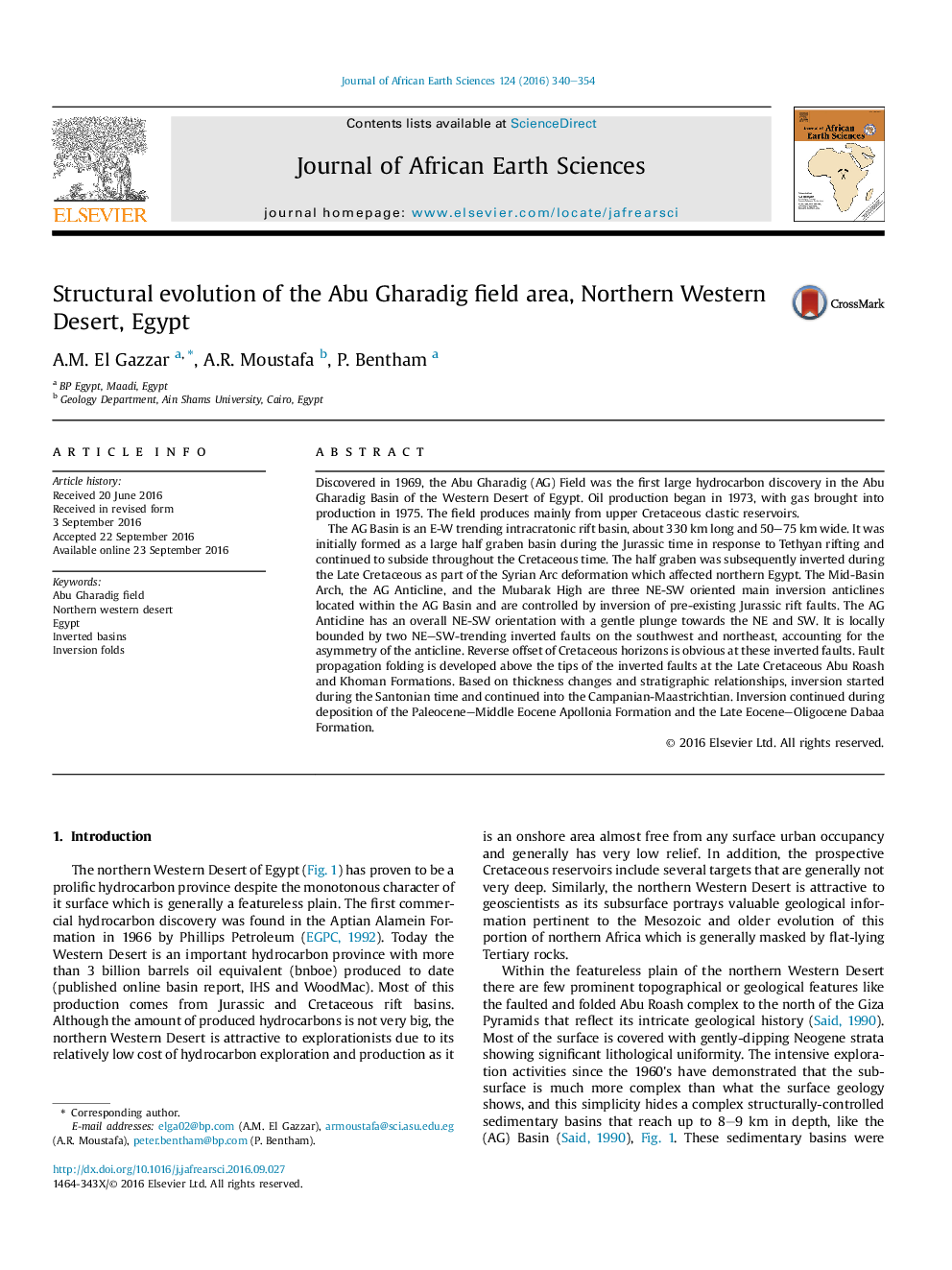| کد مقاله | کد نشریه | سال انتشار | مقاله انگلیسی | نسخه تمام متن |
|---|---|---|---|---|
| 4728152 | 1640184 | 2016 | 15 صفحه PDF | دانلود رایگان |
• Tectono-stratigraphic evolution of the AG field, northern Western Desert.
• Description of the AG Fold and bounding faults, timing of structural inversion and geometry of inversion-related structures.
• Compare the AG Fold structural evolution to other inversion folds across northern Egypt, specifically northern Sinai.
• Effect of inversion fold on petroleum system and hydrocarbon exploration in the AG field and similar inverted rift basins.
Discovered in 1969, the Abu Gharadig (AG) Field was the first large hydrocarbon discovery in the Abu Gharadig Basin of the Western Desert of Egypt. Oil production began in 1973, with gas brought into production in 1975. The field produces mainly from upper Cretaceous clastic reservoirs.The AG Basin is an E-W trending intracratonic rift basin, about 330 km long and 50–75 km wide. It was initially formed as a large half graben basin during the Jurassic time in response to Tethyan rifting and continued to subside throughout the Cretaceous time. The half graben was subsequently inverted during the Late Cretaceous as part of the Syrian Arc deformation which affected northern Egypt. The Mid-Basin Arch, the AG Anticline, and the Mubarak High are three NE-SW oriented main inversion anticlines located within the AG Basin and are controlled by inversion of pre-existing Jurassic rift faults. The AG Anticline has an overall NE-SW orientation with a gentle plunge towards the NE and SW. It is locally bounded by two NE–SW-trending inverted faults on the southwest and northeast, accounting for the asymmetry of the anticline. Reverse offset of Cretaceous horizons is obvious at these inverted faults. Fault propagation folding is developed above the tips of the inverted faults at the Late Cretaceous Abu Roash and Khoman Formations. Based on thickness changes and stratigraphic relationships, inversion started during the Santonian time and continued into the Campanian-Maastrichtian. Inversion continued during deposition of the Paleocene–Middle Eocene Apollonia Formation and the Late Eocene–Oligocene Dabaa Formation.
Journal: Journal of African Earth Sciences - Volume 124, December 2016, Pages 340–354
